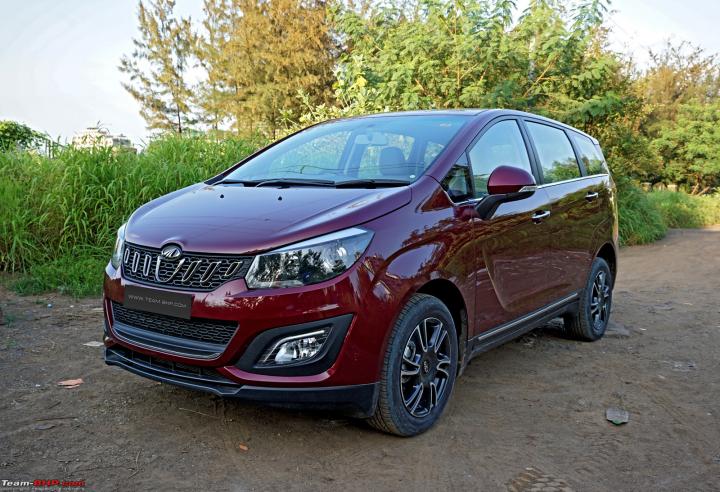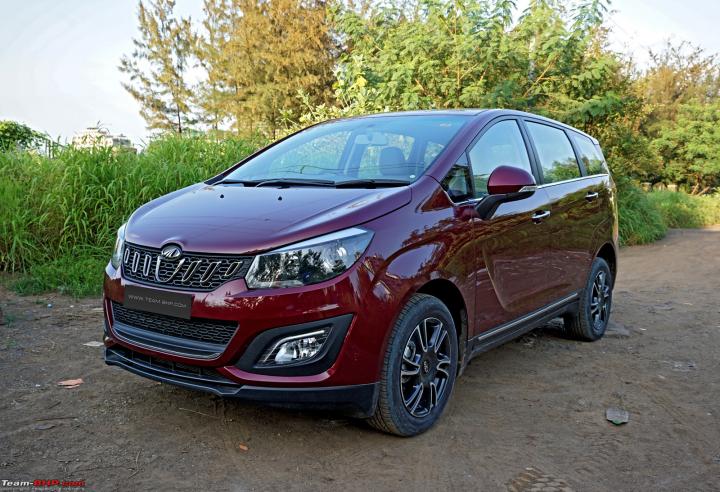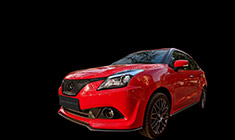News
Fuel efficiency of my Marazzo varies according to changing temperature
I get a higher FE during the morning and a lower FE during noon.
BHPian Bonemechanic recently shared this with other enthusiasts.
I drive a Marazzo M8 diesel. In Kerala, the temperature soars to 40 °C during noon. I noticed a change in the FE numbers of my car during the morning and noon hours.
Traffic is higher during the morning drive, but the outside temperature is around 26 °C. Non-time traffic is less compared to morning time, but the temperature is high around 38 °C.
I drive alone with the ACC set to 24℃ and 100% time. The driving pattern is also almost the same for to-and-fro driving.
But I get a higher FE during the morning and a lower FE during noon. I assume the FE drop is because ACC works more.
Attaching MID pictures for the last 3 days.
February 7:

February 8:

February 9:
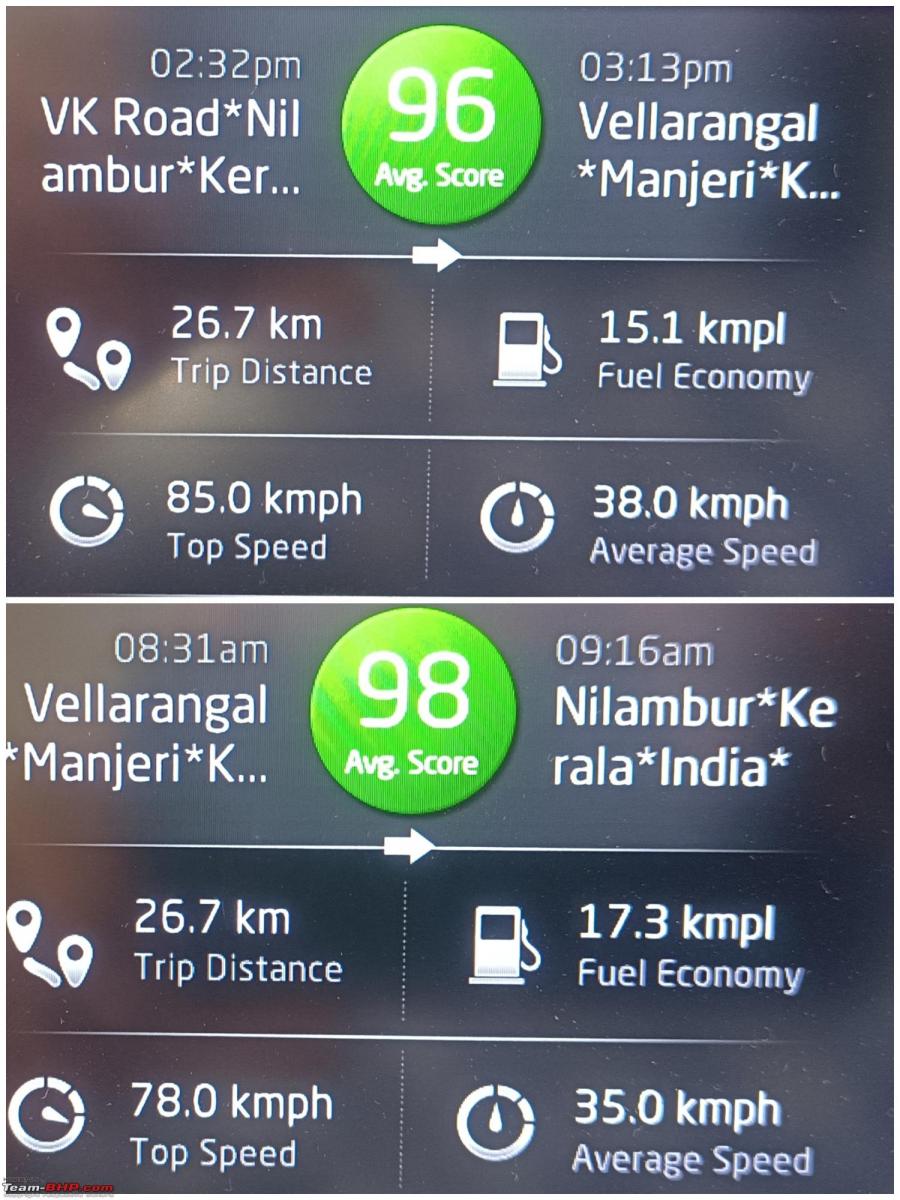
Upper photo is noon drive and lower photo is morning drive.
Just like an EV, consumes more power during the winter to heat, while an ICE uses more fuel to cool during the summer.
Here's what BHPian Shreyans_Jain had to say on the matter:
The extra electrical load due to the radiator fans running full time has minuscule effect on fuel consumption. Two other factors have a greater role.
- The AC system. High ambient temperatures reduce the temperature difference against peak compressed gas temp. This reduced delta T lessens the efficiency of the AC and makes it work harder, which is extra load on the engine. Effect increases progressively with temperature.
- The hot ambient air going into the engine is less dense, which makes for lower availability of oxygen which means lower output. Ergo, engine has to work harder to ferry the same load. Effect increases progressively with temperature, and also creates a positive feedback loop with point 1.
Overall, performance and fuel efficiency both get adversely affected with high ambient temperatures.
Here's what BHPian Jeroen had to say on the matter:
I think the difference if FE can not be explained by ambient temperature alone. Check a map and see what the vertical distance between your departure and arrival point is.
You will find you are probably driving a bit uphill one way and down hill the other way. Not enough to notice when your driving. But even a small gradients has a big impact on fuel efficiency.
Jeroen
Here's what BHPian antz.bin had to say on the matter:
Winter mornings have better efficiency on ICE cars than summer afternoons.
Colder air is denser and when the engine breathes that air, the combustion is better generating more torque for every combustion stroke.
This has been experienced since ages. It has nothing to do with engine being warmed up.
The other loss at a hotter time of day the one to cool the cabin. Air conditioner actually uses a lot more Diesel than us Diesel heads realise. As per my calculations, it uses 250-300ml per hour of running for my sub-4 m car on automatic mode even on a cold December night. Daytime usage at 40°C ambient temperature in a substantially larger car will be even higher per hour.
Both these factors should explain the lower efficiency in the afternoon time compared to the morning which is presumably substantially colder these days.
Here's what BHPian Darthveda had to say on the matter:
Driving an EV for past few years has taught me the range is influenced by the environmental changes too, first time I noticed how much the wh/km increased when the road was wet, the same I noticed during cold temperatures too, when i say cold i mean around 12C. Even though I did not use AC, the wh/km was higher than before.
All these very evident in EV vehicle as we get measurable changes in wh/km, since liquid fuel have a very high density, it doesn't catch our attention in ICE.
Check out BHPian comments for more insights and information.
News
Why I regret choosing the Maruti XL6 AT over the Mahindra Marazzo
I did not really miss driving the automatic now. Its 2nd and 3rd gears were enough to potter around at slow speeds with the car fully loaded.
BHPian TorqMaster recently shared this with other enthusiasts.
I drove the Marazzo M2 for about 1000 kms from Chennai to Dindigul and back, the past week. The car was rented from Zoomcar and had already clocked 1,03,xxx kms.
I drove the XL6 4Spd AT for 20K kms prior to this and have been driving automatics since the last 8 years.
Positives over the XL6
- Driving position and comfort. Much better than XL6.
- Gearbox was smooth to operate despite being used for 1L kms. I felt no problems getting back to driving a manual after using the XL6 AT.
- Passenger comfort on all three rows. This is the innova replacement now (not the crysta)
- Luggage space much better.
- Space inside the cabin and the overall roominess.
- Ride comfort over bad roads, speed breakers, ruts, high speeds etc.
- Useful high beams
Negatives (this car in particular)
- Basic audio system
- Some broken bits like the sunshade falling off, sticky seatbelts, broken bits inside near third row
- Fuel efficiency was only 15.5 kmpl . Being a 6spd high torque diesel, I expected more.
- Useless Low beams.
- Had to bang the doors to shut . It was because this car’s front had some damage due to which the panels were misaligned.
- Weird purple lighting for the dashboard
- No proper instant fuel economy readout. Maybe due to M2.
The car had strong vibrations at 100kmph. Perhaps bad alignment or wheel balancing. Hence I had to keep the car at around 90kmph to cruise comfortably. There were times I had to touch 120kmph to overtake vehicles and the car would quickly accelerate and then I would come back to 100kmph or thereabouts.
While returning from Dindigul we refueled the car and the check engine light came on. We were not sure if this would cause a problem on the journey. We were 4 adults and 4 children in the car, hence we did not switch off the car and kept driving for the next 8 hours. The car performed without a hiccup but the CEL remained on.
The car had many dents and dings in its doors, bumpers etc. Many rust spots from its past scars. It ran on steelies. Bits and pieces of its front wheel well claddings were hanging off. But it sounded fine, ran fine and brakes fine. No weird sounds from suspension or engine.
The AC took time to cool since the glass area is big. The second and third row servicing roof AC was effective.
At the end of the drive we paid 123xx for the rental and about 6500 for diesel for 1000kms. I thought the rental was expensive and the fuel economy was on the lower side. Perhaps the vehicle needed a service.
When we returned from the trip I regretted not buying this vehicle when I was in the market in 2021. I did not really miss driving the automatic now. Its 2nd and 3rd gears were enough to potter around at slow speeds with the car fully loaded. Never at any instance did I feel it was underpowered.
I quickly looked up the price of Marazzo and realised it was going to be discontinued.
If I was I the market now, this is the car I would buy.
Read BHPian comments for more insights and information.
- Tags:
- Indian
- Maruti XL6
- mahindra marazzo
News
Mahindra Marazzo: Repeated AC issues lead to 3 compressor replacements
At around 30,000 km, the air conditioner stopped working and the authorized service center (ASS) replaced the compressor for free.
BHPian Bonemechanic recently shared this with other enthusiasts.
I am a new member to this forum but a long-time follower. I would like to thank the moderators for approving my request. I own a Mahindra Marazzo M8 with a 2019 registration. I have been happy with my "shark" and have driven approximately 107,500 km so far. My warranty expired in December.
During my ownership, I have experienced the following problems:
At around 30,000 km, the air conditioner stopped working and the authMahindraorized service center (ASS) replaced the compressor for free.
At 60,000 km, the in-car entertainment (ICE) stopped working, but was replaced under warranty.
After 95,000 km, some speed sensors started malfunctioning and caused a high-speed alert in the MID even at 10 km/hr or while reversing. This was also replaced under warranty.
I have had all services done at the ASS and they have been very helpful and supportive.
Today, while I was driving, the AC went wrong again. It started blowing hot air and is not cooling at all.
I visited the Mahindra service center. They checked and confirmed that the problem is with the compressor and it needs to be changed again. They ordered a new compressor and it will take at least a week to arrive.
Thanks.

BHPian Bonemechanic shared the following update:
My Marazzo has been repaired and is back. The compressor was at fault and has been replaced. It is now working smoothly.
Read BHPian comments for more insights and information.
- Tags:
- Indian
- mahindra marazzo
News
Sales performance of cars that won the TeamBHP Car of the Year
Kia Seltos is the most successful TeamBHP Car of the Year.
BHPian pqr recently shared this with other enthusiasts.
Sales performance of Team BHP CoTY



- Hyundai, Maruti, and Toyota never won Team BHP CoTY title despite delivering some real sales champions in a few segments.
- Despite bringing in some enthusiast-appealing cars, VAG never won Team BHP CoTY title.
- Two cars of the year were flops: the Tata Nano and the Mahindra Marazzo.
- SUVs always got over 40% of the votes while winning the yearly contest.
CoTY is awarded in the launch year, however, products have to live long and sustain sales throughout the product-life-cycle (PLC) and even after generation changes. Here is the analysis of PLC sales volume to review actual sales performance.
2009 Tata Nano & 2016 Tata Tiago

The Tata Nano was one of the most innovative but overhyped product, which gave a lot of nightmares to Osamu Suzuki (Chairman Suzuki Motor) before 2010. Nano was supposed to sell around 2.5 lakh units annually; however, total lifecycle sales could reach only 3 lakh units as Nano was completely rejected by the Indian audience. Even Tiago’s sales were higher.

Tata Tiago was the spiritual successor of Tata Indica, however, it never attained the market share that Indica had in the past. Tata Altroz, launched in 2020, attained a higher market share than Tiago in 2021. So as a turnaround project, Tiago served its purpose but was not quite a match for its predecessor or a sales benchmark in the industry. Despite being cost-competitive, Tiago has established the appropriate safety standard in the industry.
2010 Ford Figo

The first generation Figo was a success until the facelift, after which the Figo lost its way, and the second generation was a disaster, leading to Ford's exit from India.
2011 Mahindra XUV 500 & 2021 Mahindra XUV 700

The XUV 500 was a runaway success, and so is the XUV 700. However, PLC management was not that great for the XUV 500, and it suffered a lot towards the end when the next generation was desperately needed. If Mahindra had ramped up the production capacity of the XUV 500 to the 2011 wholesale level, then the underutilization of plant capacity would be over 1.6 lakh units till 2021.

With a 5-star crash test safety rating, powerful and diverse drivetrain choices, better suspension, and a tech-loaded package, Mahindra has provided much stronger armour to the XUV 700 to stay competitive in the long run. Despite a strong order bank, it is time for Mahindra to not get complacent and strive for a higher market share.
2012 Renault Duster

If a product strikes the right chord with a potential customer segment, then what’s in the name? Duster was a definitive product that gave birth to a soon-to-be hot and aspirational segment and did well in the early part of PLC. Renault, however, failed to properly plan and execute the Duster's lifecycle, resulting in the product's discontinuation in 2021.
Duster couldn’t score a four-star rating in the GNCAP crash test; however, successive products like Triber and Kiger scored well despite having a very low entry price point.
2013 Ford Ecosport

A definitive product that never lost its appeal despite increasing competition. If Ford India hadn’t become so complacent on Ecosport, then it could have done even better.
2014 Tata Zest

As a turnaround and bridging project, Zest simply served its purpose. A four-star safety rating in the GNCAP crash test was a commendable achievement for Zest.
2015 Renault Kwid
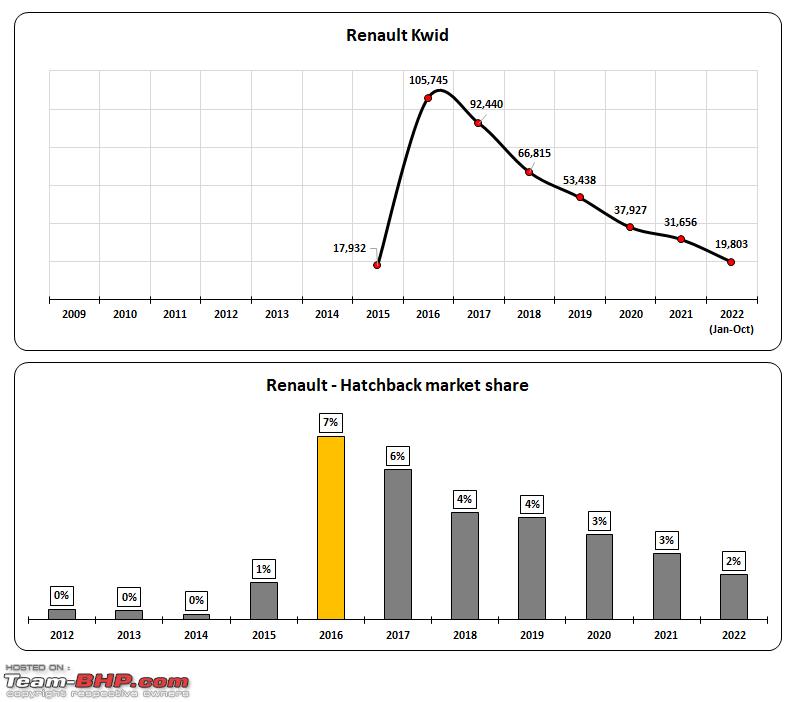
Maruti, Hyundai, and Tata have commanded 84% to 97% of the hatchback market share between them since 1998, thus leaving less room for others to succeed. So Renault came up with a path-breaking product and achieved remarkable success with a 7% hatchback market share in 2016. But then complacency set in, and Renault, being the typical poor parent, again forgot to manage the PLC of the Kwid well, resulting in poor sales after 2017.
2017 Jeep Compass

Besides being compact premium offerings, the Jeep Compass, Skoda Yeti, and Hyundai Tucson have one thing in common: a 2L diesel engine option. Compass is locally manufactured in India and exported to other RHD countries, whereas other two had a CKD operation. Thus, Jeep Compass pricing was competitive (relatively) at the time of launch, thus creating a much bigger market for itself than others. The rest of the PLC is simply a roller coaster ride, as the graph suggests.
2018 Mahindra Marazzo

Kia Carens has done what Mahindra couldn’t do with the Marazzo. That is, finding a place to live and thrive even while sandwiched between the Maruti Ertiga, the XL6, and the Toyota Innova. Marazzo had the safest rating among all competitors, with a four-star GNCAP crash test rating.
2019 KIA Seltos

Kia Seltos is perhaps the most successful TeamBHP CoTY, as demand is still strong even after three years of existence and cars are selling without discount. It checked all the boxes that Indian customers value, except for safety. It seems that particular box doesn’t exist. Still, it could not topple the Hyundai Creta in 2020, as the latter has changed the rules of the game with the first panoramic sunroof in the segment.

Together, Hyundai and KIA have decimated the competition in 2020.
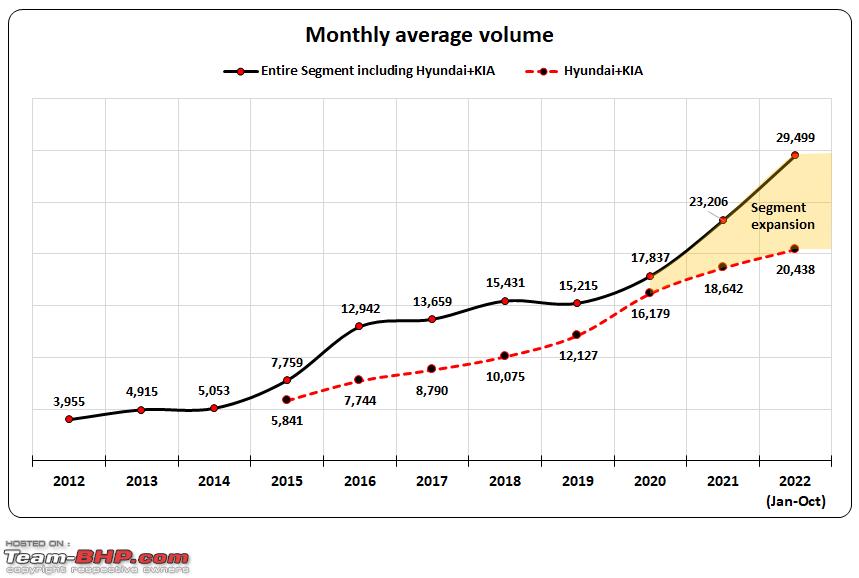
Challengers have re-emerged, but they expanded the segment rather than hurting Hyundai-KIA’s volume.
2020 Mahindra Thar

The changed value proposition—easy to live with every day as an off-roader—of the Thar second generation has changed the game for Mahindra. Now, it appeals to city dwellers with different lifestyle aspirations. In reality, Thar is purchased more for show than for any serious off-road adventure. However, Mahindra has correctly identified a previously unseen emotional need and has shown the courage to develop and deploy a petrol engine for Thar, along with an automatic transmission. Some are trend followers, and some just create one with the Jeep Wrangler concept and design rip-off. What differentiates the Thar from the Wrangler is a good score in the safety crash test rating.
Team BHP CoTY GNCAP safety rating

Read BHPian comments for more insights and information.



